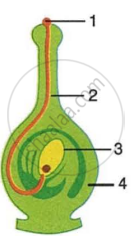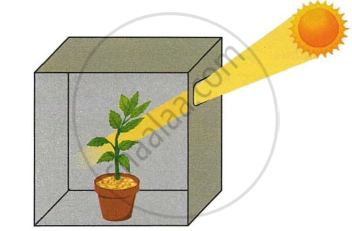Advertisements
Advertisements
प्रश्न
The diagram given alongside shows a type of tropism. Study the same and answer the questions that follow:

- Name and define the type of tropism shown in the diagram.
- Label the guidelines (1) to (4).
- Name two effective stimulants that help in the growth of part (2).
- Name two groups of plants where part (2) grows towards gametophyte with the help of the stimulants mentioned in (c).
उत्तर
- Chemotropism: Chemotropism is the phenomenon of the growth of plant organs in response to chemicals.
-
- Pollen grain
- Pollen tube
- Ovule
- Ovary
- Sugars and peptones.
- Gymnosperms and angiosperms.
संबंधित प्रश्न
How is the movement of leaves of the sensitive plant different from the movement of a shoot towards light?
How does phototropism occur in plants?
Plant parts show two types of movements, one dependent on growth and other independent of growth. Give one example which does not depend on growth
The response of leaves to the sunlight is called ______.
Name the plant organ which is positively hydrotropic.
The bending of the shoot of a plant in response to light is called :
(a) geotropism
(b) phototropism
(c) thigmotropism
(d) photonasty
Heliotropism is a kind of ______.
Write the scientific terms used to represent the following:
Bending of roots towards the water.
The height of a plant is regulated by ______.
The figure given below depicts a kind of tropic movement in plants. Study the same and answer the following questions:

- What kind of a movement is shown in the figure? Define it.
- How does this movement differ from geotropism?
- Name the stimulus responsible for thigmotropism. Give one example of a plant showing thigmotropism.
- Name one stimulus which gives a positive response for the roots but a negative response for the shoot.
- Draw a neat and labelled diagram of the part of a plant showing leaf tendril. Name the plant.
